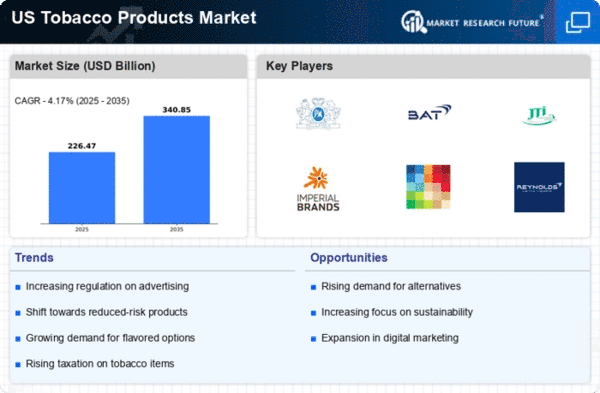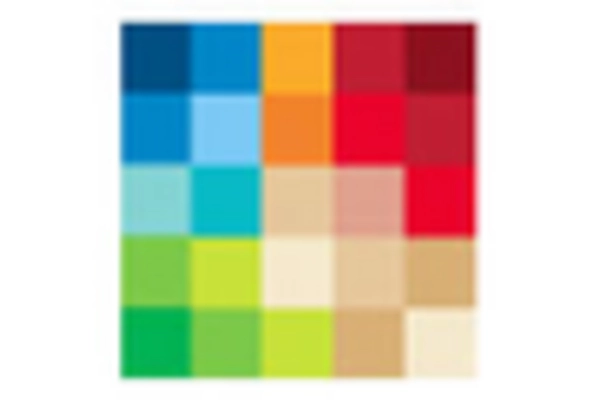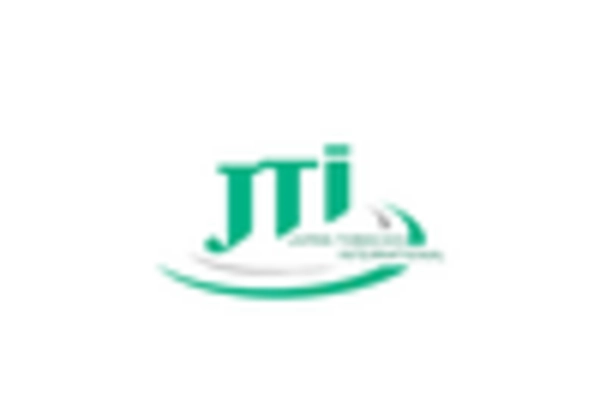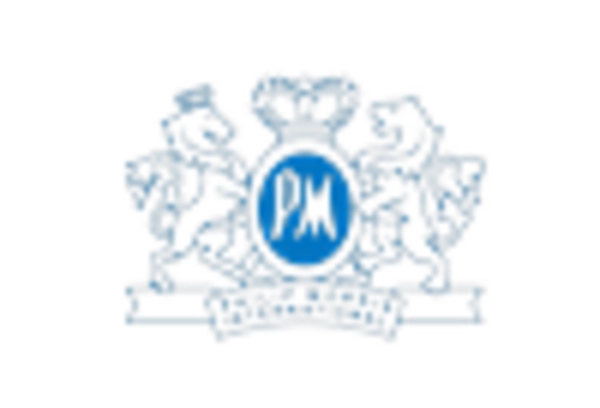Health Awareness Campaigns
Health awareness campaigns have significantly influenced public perception of tobacco use, thereby impacting the tobacco products market. Initiatives aimed at educating the public about the dangers of smoking have led to a decline in smoking rates, particularly among youth. In 2023, surveys indicated that around 15% of high school students reported using tobacco products, a decrease from previous years. This heightened awareness may encourage consumers to seek out less harmful alternatives, such as nicotine patches or e-cigarettes. Consequently, the tobacco products market is likely to experience shifts in demand as consumers become more informed about their choices.
Technological Advancements
Technological advancements play a crucial role in shaping the tobacco products market. Innovations in product design and manufacturing processes have led to the development of more sophisticated smoking alternatives, such as vape pens and heat-not-burn devices. These products often appeal to consumers seeking a less harmful experience compared to traditional cigarettes. In 2023, the market for e-cigarettes alone was valued at approximately $4 billion in the US, indicating a robust demand for technologically advanced tobacco products. As technology continues to evolve, it is likely that the tobacco products market will see further diversification in its offerings, catering to a broader range of consumer preferences.
Changing Regulatory Landscape
The regulatory landscape surrounding the tobacco products market is continually evolving, impacting how products are marketed and sold. Recent legislation has introduced stricter advertising restrictions and increased taxes on tobacco products, which may influence consumer purchasing behavior. For instance, in 2023, several states implemented new tax measures that raised the cost of traditional cigarettes by an average of 2.5%. Such regulatory changes could potentially drive consumers towards lower-cost alternatives, thereby reshaping the market dynamics. The tobacco products market must navigate these regulatory challenges while remaining compliant, which may also spur innovation in product development.
Evolving Consumer Preferences
The tobacco products market is experiencing a notable shift in consumer preferences, particularly among younger demographics. Increasing health consciousness and a growing awareness of the risks associated with traditional smoking are driving consumers towards alternatives such as e-cigarettes and heated tobacco products. Data indicates that in 2023, approximately 30% of smokers in the US reported trying e-cigarettes, reflecting a significant trend towards these alternatives. This evolution in consumer behavior suggests that the tobacco products market must adapt to meet the changing demands of its customer base, potentially leading to a decline in traditional cigarette sales and an increase in innovative product offerings.
Economic Factors and Pricing Strategies
Economic factors, including disposable income levels and pricing strategies, significantly affect the tobacco products market. In times of economic downturn, consumers may opt for lower-cost tobacco products or reduce their overall consumption. Conversely, during periods of economic growth, there may be an increase in premium product sales. In 2023, the average price of a pack of cigarettes in the US reached approximately $6.50, which could deter price-sensitive consumers. As a result, the tobacco products market must carefully consider pricing strategies to remain competitive while addressing the economic realities faced by consumers.

















Leave a Comment